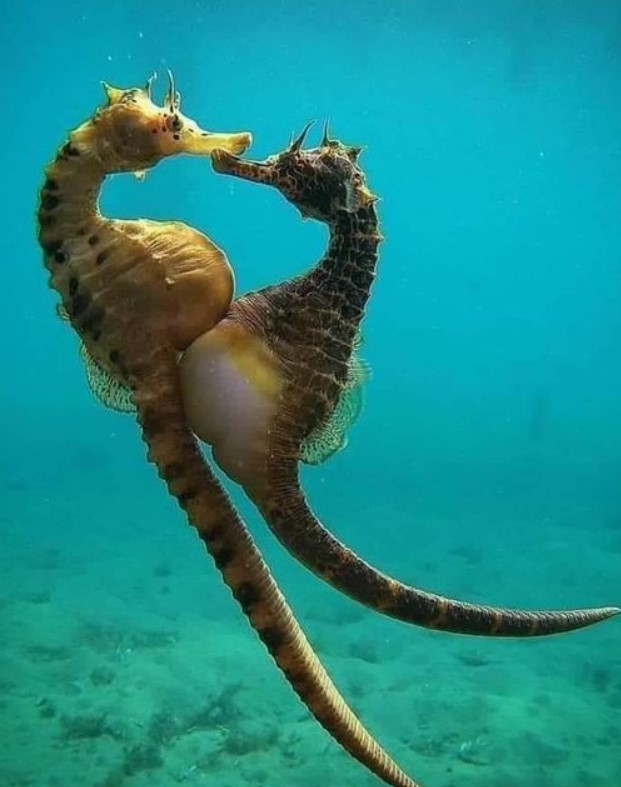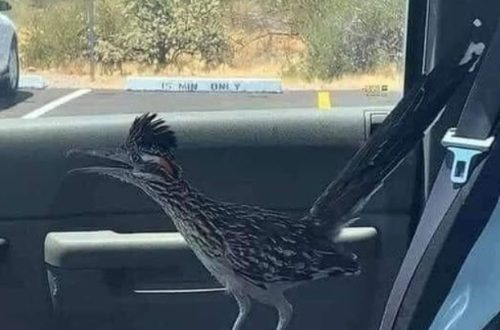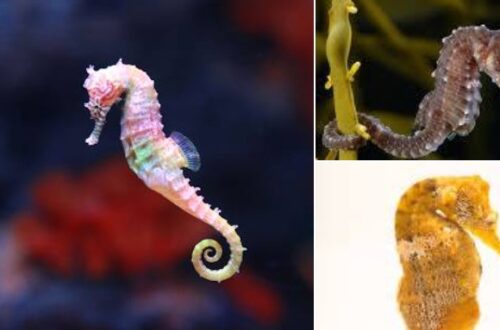A deep sea diver captures an image of the exact time a female seahorse transfers her eggs to a male to carry to term. Incredible nature
Two seahorses close together, and the female began to put its eggs in a special bag of males. The male seahorse will fertilize the eggs and hatch them themselves and carry them in the abdomen during pregnancy. After a few weeks of hatching eggs, the seahorse father will give birth. Seahorses can produce up to 1,500 juveniles at a time.
Seahorses are members of the pipefish family. In addition to their iconic appearance, seahorses possess many interesting attributes. Among them are specialized structures in their skin cells, called chromatophores, which allow the mostly sessile seahorses to change color to mimic their surroundings. Well camouflaged as they cling to stalks of seagrass in their shallow habitats, seahorses can be hard to see.
After completing an elaborate courtship dance that may go on for hours or days, the female seahorse transfers her mature eggs into the male’s brood pouch, where they are fertilized. At the end of a gestation period usually lasting from two to four weeks, the pregnant male’s abdominal area begins to undulate rhythmically, and strong muscular contractions eject from a few dozen to as many as 1,000 fully formed baby seahorses into the surrounding water. After that, the offspring must fend for themselves. Large litters are necessary because only about 0.5 percent will survive to adulthood.
Many, if not all, of the 47 known seahorse species—14 of which were identified only in the 21st century—are in decline worldwide.





